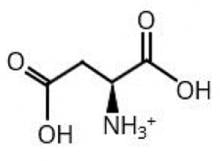Contents
If you’re preparing for the Medical College Admission Test® (MCAT®), you will want to consult the experts. These selections from Kaplan’s MCAT Question of the Day series can help you sharpen your skills as you prepare to begin your potential journey into medical training.
The questions below come from three of the four MCAT sections—biological and biochemical foundations of living systems; chemical and physical foundations of biological systems; and psychological, social, and biological foundations of behavior. A fourth section, critical analysis and reasoning skills (commonly referred to as CARS), is based largely on inference.
Medicine can be a career that is both challenging and highly rewarding but figuring out a medical school’s prerequisites and navigating the application process can be a challenge unto itself. For students preparing for medical school, the AMA premed glossary guide has the answers to frequently asked questions.
For those already in medical school, the AMA and Kaplan have teamed up to support you in reaching your goal of passing the USMLE® or COMLEX-USA®. If you're looking for additional resources, Kaplan provides free access to tools for pre-clinical studies, including Kaplan’s Lecture Notes series, Integrated Vignettes, Shelf Prep and more.
Section: Biological and biochemical foundations of living systems
Question: What would be the net charge on aspartic acid at a pH of 1?
A. +1
B. 0
C. -1
D. -2
The correct answer is A.
Kaplan explains why: Aspartic acid has three functional groups: a backbone carboxyl group, a sidechain carboxyl group, and a backbone amine. At a pH of 1, all three functional groups would be protonated, resulting in a neutral charge for both carboxyl groups, and an amine with a positive charge. The net charge on aspartic acid at pH 1 would be +1, making choice A correct.
Section: Chemical and physical foundations of biological systems
Question: A rifleman shoots a 3-g silver bullet into a wooden wall. If the bullet leaves the rifle at 250 meters per second, and if all of the energy of the bullet goes into heating it as it strikes the wood, what is the temperature change of the bullet? (The specific heat of silver is 234 J/kg·K )
A. 0.53 K
B. 44.5 K
C. 133.5 K
D. 267.0 K
The correct answer is C.
Kaplan explains why:
All of the kinetic energy of the bullet gets transferred into heat:
Q=Q=12mv2
The temperature change of the bullet is related to the heat energy it receives:
Q=MC∆T
where C is the specific heat of the bullet material, silver. By combining these two equations, we can solve for the change in T:
∆T=1mv2mc=v22c= (250)22(234)=133.5 K
answer choice (C).
Section: Psychological, social and biological foundations of behavior
Question: A child touches a painfully hot bowl of soup and her hand recoils immediately. Which of the following is not part of this initial response?
A. Spinal interneurons
B. Peripheral nerve tissues
C. Efferent sensory neurons
D. Efferent motor neurons
The correct answer is C.
Kaplan explains why: The question stem describes a typical reflex in response to pain, and asks us what would NOT be involved in that response, so we can rephrase the question as: What would not be involved in a typical reflex arc?
Choice C is correct because while sensory neurons would be involved, they would be afferent neurons (bringing sensory information into the body). Choice A is the link between the input from the sensory neurons and the motor output. Since motor output would be involved, that makes choice D incorrect. While the interneurons are in the spine and thus would be part of the CNS, the sensory and motor neurons would be peripheral nervous tissues, making choice B incorrect as well.




